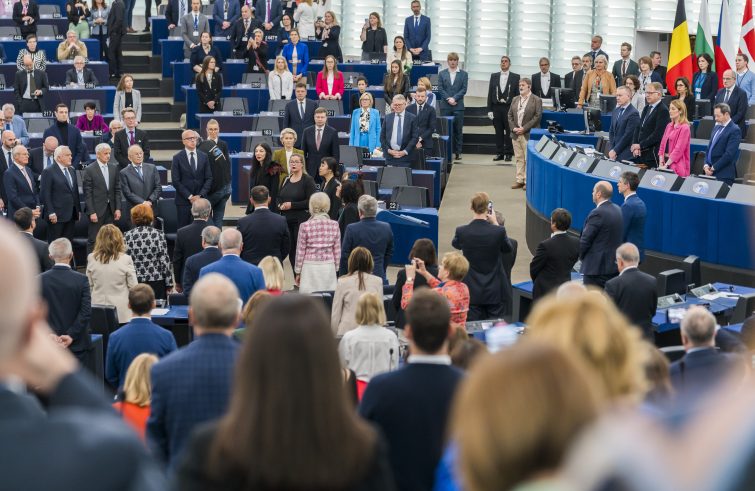
“I am duty-bound to speak as an Italian, defending the vitality of my people. However, I also feel a responsibility to speak as an anti-fascist democratic representative of a new Republic, which, by harmonising in itself Giuseppe Mazzini’s humanitarian aspirations with the universalistic conceptions of Christianity and the international hopes of workers, is still now oriented to that peace you are trying to achieve and towards that cooperation within those populations that you have to establish.” Thus declared the then President of the Italian Council of Ministers Alcide De Gasperi in his address to the Paris Peace Conference on 10 August 1946, addressing all 21 World War II victorious nations. At the aforementioned event, he underscored Italy’s readiness to initiate efforts towards a unified and peaceful Europe. De Gasperi served as the second President of the European Parliament in 1954, succeeding Paul-Henri Spaak of Belgium. He was the first Italian to hold this position. In the lead-up to the upcoming election for the renewal of the European Parliament, it may be helpful to examine the functioning of the Assembly’s presidency in greater detail. The inaugural task of the newly elected European Parliament will be to elect its president and other governing bodies.
Past and present. A review of the historical record reveals a long list of Presidents of the European Parliament, even before the 1979 elections by universal suffrage. Five of these were Italian, which testifies to Italy’s significant contribution to this important institution.
Alcide De Gasperi, a founding father of the European Community, served as President of the European Parliament for a few months in 1954 shortly before his death.
He was succeeded by Giuseppe Pella, Gaetano Martino, Mario Scelba and Emilio Colombo. There have been two other Italian Presidents of the European Parliament since 1979: Antonio Tajani, from 2017 to 2019, and the late David Sassoli, from 2019 until his death in early 2022. There have been three women presidents of the European Parliament so far: Simone Veil in 1979, the first woman to lead the assembly, followed by Nicole Fontaine. The current President is Roberta Metsola from Malta. The next President of the European Parliament will be elected in Strasbourg during the first plenary session, already scheduled for mid-July. The vote will be subject to an agreement between the political groups in the chamber and the MEPs elected in the June elections.
Prominent role. The Presidency of the European Parliament is elected for a renewable period of two and a half years. This corresponds to half a parliamentary term. The Presidency represents the European Parliament to the outside world and in its relations with the other EU institutions.
“The President,” reads a note from the European Parliament, “oversees the work of Parliament and its constituent bodies, as well as debates in plenary, and ensures that Parliament’s Rules of Procedure are observed.”
At the beginning of every European Council meeting, the President of the European Parliament sets out Parliament’s point of view and its concerns as regards the items on the agenda and other subjects. Furthermore: After the EU budget has been adopted by Parliament, the President signs it, rendering it operational.” Together with the President of the EU Council, the President of the European Parliament signs all legislative acts adopted under the ordinary legislative procedure.
A complex mechanism. The European Parliament has a number of political bodies responsible for organising Parliament’s work and legislative planning or for Parliament rules as well as for administrative, financial, staff and organisational matters. The Conference of Presidents is the political body of the European Parliament responsible for the organisation of Parliament’s business and legislative planning, deciding on the responsibilities and membership of committees and delegations, relations with other EU institutions, the national parliaments and non-EU countries.
The Conference of Presidents prepares Parliament’s timetable and plenary sitting agendas.
It consists of the President of the European Parliament and the political group chairs. The Bureau is the body that lays down rules for Parliament. It draws up Parliament’s preliminary draft budget and decides all administrative, staff and organisational matters. It consists of the President of the European Parliament, the 14 Vice-Presidents and the five Quaestors elected by Parliament. Finally, the College of Quaestors is the body of the European Parliament responsible for administrative and financial matters directly concerning Members and their working conditions. In its political and legislative work, Parliament is assisted by Committees, delegations and political groups, but its work culminates in four-day Plenary Sessions, held 12 times a year in Strasbourg, and a number of ‘mini-plenaries’, usually lasting two days, in Brussels.











